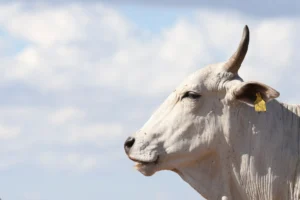
Can COP30 change the future of cows and climate in Brazil?
At COP30, the world’s eyes are on Brazil, and the cattle ranchers leading a global transformation.
While greenhouse gases such as carbon dioxide, nitrous oxide and methane are often treated as equal culprits in climate change, that isn’t really the case. The reality is much more complex.
Carbon dioxide (CO2) emissions generally come from the burning of fossil fuels, meaning that these harmful gases are new to the atmosphere, having been locked up in the Earth for millions of years. CO2 emissions are the most significant contributor to climate change, primarily driven by human activities such as the combustion of coal, oil and natural gas for energy and transportation; and industrial processes like cement production, steelmaking and chemical manufacturing.
CO2 from fossil fuel emissions is being released into the atmosphere at a much faster rate than it can naturally be absorbed by oceans and plants. It will remain in the atmosphere for an indefinite length of time, building up and creating a stockpile of CO2 in the atmosphere.
Methane (CH4) is a more potent greenhouse gas that also contributes to climate change, though it is emitted in smaller quantities than CO2. Several sources produce methane, including decomposing organic waste in landfills, natural gas and oil extraction, and wetlands, but agriculture is one of the world’s largest sources of methane.
However, methane emissions from ruminants (cattle, sheep, goats, and others) are different. They’re part of a natural process called the biogenic carbon cycle — a process that nourishes plants and provides humans and animals with the food we eat and even the oxygen we breathe.
The biogenic carbon cycle naturally offsets methane emissions produced during the digestion of feed by cattle. While plants cannot differentiate CO2 from various sources, the release of carbon from coal, gas and other stored reserves caused by human activities exceeds the rate at which plants can take up carbon dioxide, disrupting the balance. It takes 1,000 years for CO2 emitted from burning fossil fuels to return to geological reserves. In comparison, methane released by cattle, which breaks down into CO2 in the atmosphere and is reabsorbed into plant matter in just a fraction of that time, with no new CO2 entering the cycle.
Plants have the unique ability to remove carbon from the atmosphere and deposit it into plant leaves, roots and stems while oxygen is released back into the atmosphere. It is a process called photosynthesis, and it is central to the biogenic carbon cycle.
During photosynthesis, carbon dioxide is converted into oxygen and into nutrients, mainly a type of tough, fibrous carbohydrate called cellulose that is one of the main building blocks for growing plants. While humans can’t digest cellulose, ruminants such as cattle, with their powerful four-chambered stomachs, can. (Fun fact: Studies have shown that 86% of the feed materials that livestock eat cannot be consumed by humans.) As the cattle digest the cellulose, they convert it to milk and meat.
This ruminant digestion process also generates and releases methane into the atmosphere. But, unlike CO2, the methane doesn’t hang around for centuries, warming the planet day by day and year by year. Methane is 25 to 28 times stronger than CO2, but it lives in our atmosphere for a much shorter period — about 12 years —before being broken down into CO2 and water vapor. And that CO2 — which, again, has been generated as part of a natural cycle, not artificially from burning fossil fuels — can then be taken up by plants, starting the process again — meaning that there is no net addition of CO2 to the atmosphere. This is the magical “vanishing act” that keeps the system in homeostasis, with people, plants and animals all getting what they need to survive.
Currently, the main accounting method used for measuring the climate impacts of greenhouse gases does not describe the differences in how individual gases warm the climate over time, according to The CLEAR Center at the University of California, Davis. That oversight often leads to a misinterpretation of methane’s role in warming the climate, while also ignoring possible solutions that could offset greenhouse gases from other sectors.
“While more potent than the most prevalent greenhouse gas carbon dioxide, methane is a short-lived climate pollutant, staying in our atmosphere for about 12 years before it’s broken down and removed,” says Dr. Frank Mitloehner, a professor and air quality specialist who leads The CLEAR Center. “On the other hand, carbon dioxide remains in our atmosphere for centuries, with new emissions accumulating on top of those previously emitted, making it by far the main driver of climate change.”
While methane accounts for a smaller portion of greenhouse gas emissions than CO2, it has a higher ability to trap heat than CO2 does, so we can’t dismiss even its short stay in the atmosphere. However, thanks to the latest scientific research, we now know that with proper farming management, cattle can help trap, or “sequester,” carbon in the soil. In fact, the agriculture industry has the ability to sequester more greenhouse gases than it produces — and the potential to not only reduce its own emissions but capture and sequester carbon released by other industries, too.
Want to learn more? Check out these links.

At COP30, the world’s eyes are on Brazil, and the cattle ranchers leading a global transformation.
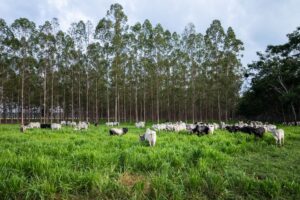
Restoring 40 million hectares of pasture could feed billions and ease pressure on the Amazon. Is the world paying attention?
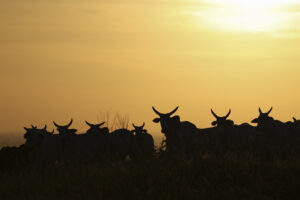
New mini-doc explores deforestation, food security and the Brazilian cattle sector’s path to a more sustainable future
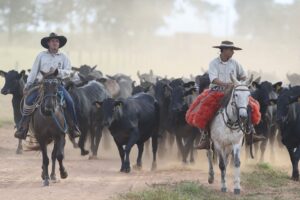
Mention Brazilian beef, and you’re likely to spark discussion about familiar themes: deforestation, emissions and blame. What do we find when we dig deeper? Here are the answers to five top questions about Brazil’s role in protecting the Amazon and feeding the world.
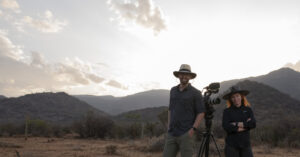
From science to the big screen: Discover how a single question grew into a global journey.

The role of essential oils like thyme, oregano and clove in reducing methane emissions from cattle.
As climate change intensifies and the world’s population continues to grow, the pressure on our global food production system mounts. You can play an active role in shaping a more sustainable planet for future generations. Fill out the form below to learn more about how you can partner with us.
Receive notifications about the release date, new online content and how you can get involved